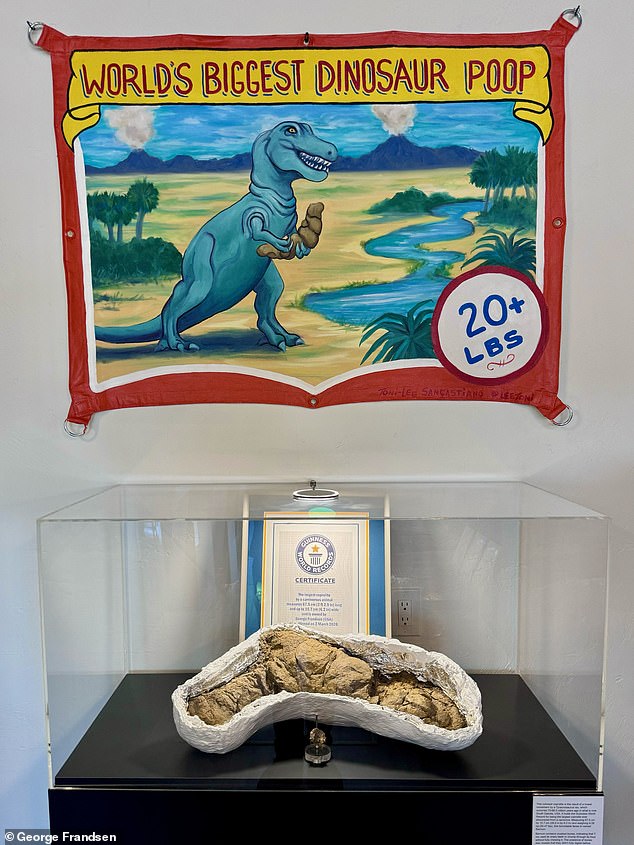
BBC’s Walking with Dinosaurs Sparks Debate Over Fossil Authenticity
A prehistoric controversy unfolds as a fossilized feces takes center stage in the BBC’s latest docuseries.
[Image: A large, dark-brown coprolite labeled "Barnum" displayed in a museum. Caption: The "Barnum" coprolite, a record-holding fossilized feces from Arizona, now at the Poozeum.]
The BBC’s Walking with Dinosaurs returns with a new episode featuring Clover, a young triceratops evading predators 66 million years ago. While the series dazzles with CGI, it faces criticism over a scene involving a fossilized T. rex coprolite (fossilized feces) allegedly misrepresented as a fresh discovery.
The Controversy
The episode shows paleontologists in Montana analyzing a massive coprolite, measuring 26.5 inches long and 6.2 inches wide, attributed to a T. rex. However, the fossil, named "Barnum," was unearthed in Arizona’s Hell Creek in 2019 and has resided at Arizona’s Poozeum since 2020. Critics argue the scene implies the fossil was excavated on-site, misleading viewers.
[Image: Researchers in Montana examining a partially exposed coprolite. Caption: Paleontologists analyze Barnum, though it was transported from Arizona.]
Conservative MP Alec Shelbrooke called the segment “totally misleading,” emphasizing the BBC’s duty to prioritize factual accuracy. The BBC clarified that the coprolite was brought to the Montana site for educational context, not excavated there.
The Science Behind the Story
Barnum holds a Guinness World Record as the largest coprolite from a carnivore. Experts Eric Lund and Aubrey Knowles highlighted its composition, noting embedded bones from prey. “The shape and texture confirm it’s a T. rex coprolite,” said Lund. The team used it to illustrate the predator’s diet, a key element in the episode’s narrative.
[Image: 1999 Walking with Dinosaurs scene featuring a T. rex. Caption: The original 1999 series set the stage for modern paleontology storytelling.]
BBC’s Defense
The BBC stated the episode never claimed the coprolite was found in Montana. A spokesperson explained, “The fossil was used to provide context about T. rex behavior,” noting it’s common for scientists to bring fossils to dig sites for comparative analysis.
Legacy and New Episodes
The reboot follows the groundbreaking 1999 series, which revolutionized dinosaur documentaries. New episodes feature species like the spinosaurus and a "spiky" gastonia. Executive producer Helen Thomas emphasized the team’s commitment to blending storytelling with real science, citing Clover’s rare juvenile triceratops fossils found near T. rex remains.
[Image: Paleontologists excavating fossils in a desert. Caption: The series highlights real digs, like Clover’s triceratops site.]
Airing Details
The episode premieres Sunday, May 25, at 6:25 PM on BBC One and iPlayer, inviting viewers to explore prehistoric life through cutting-edge science—and a contentious coprolite.
Word count: ~600


